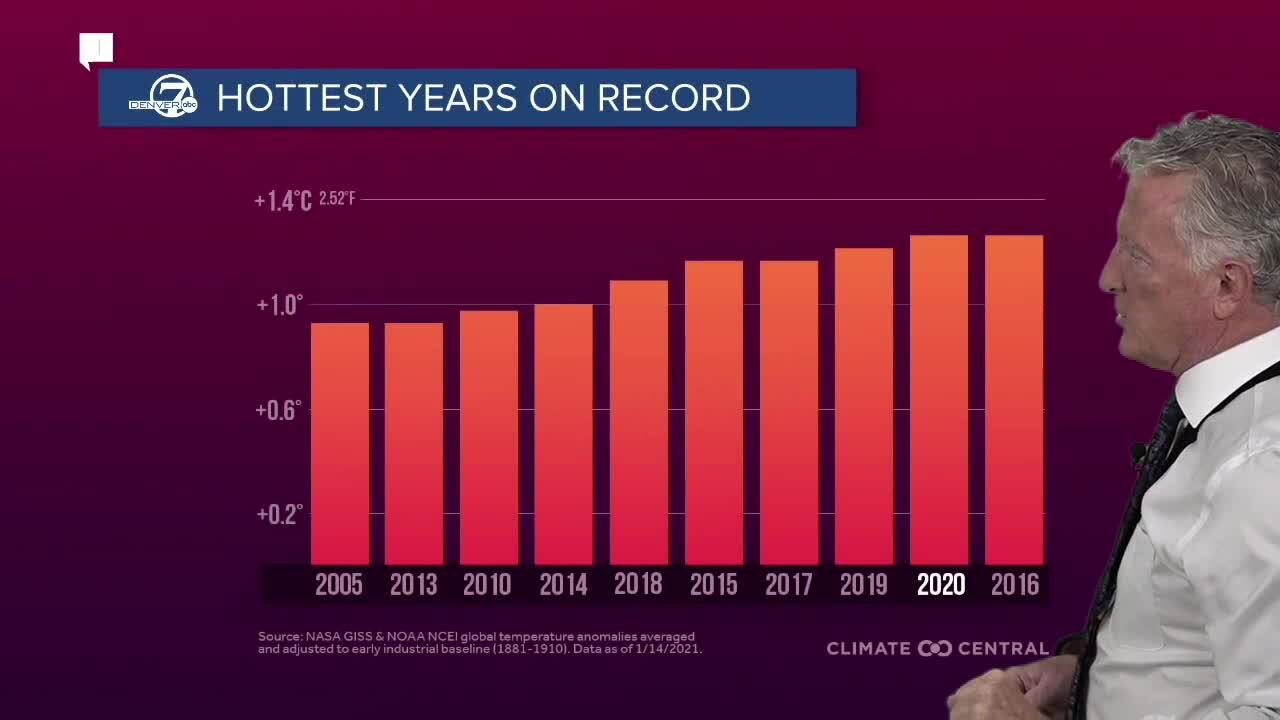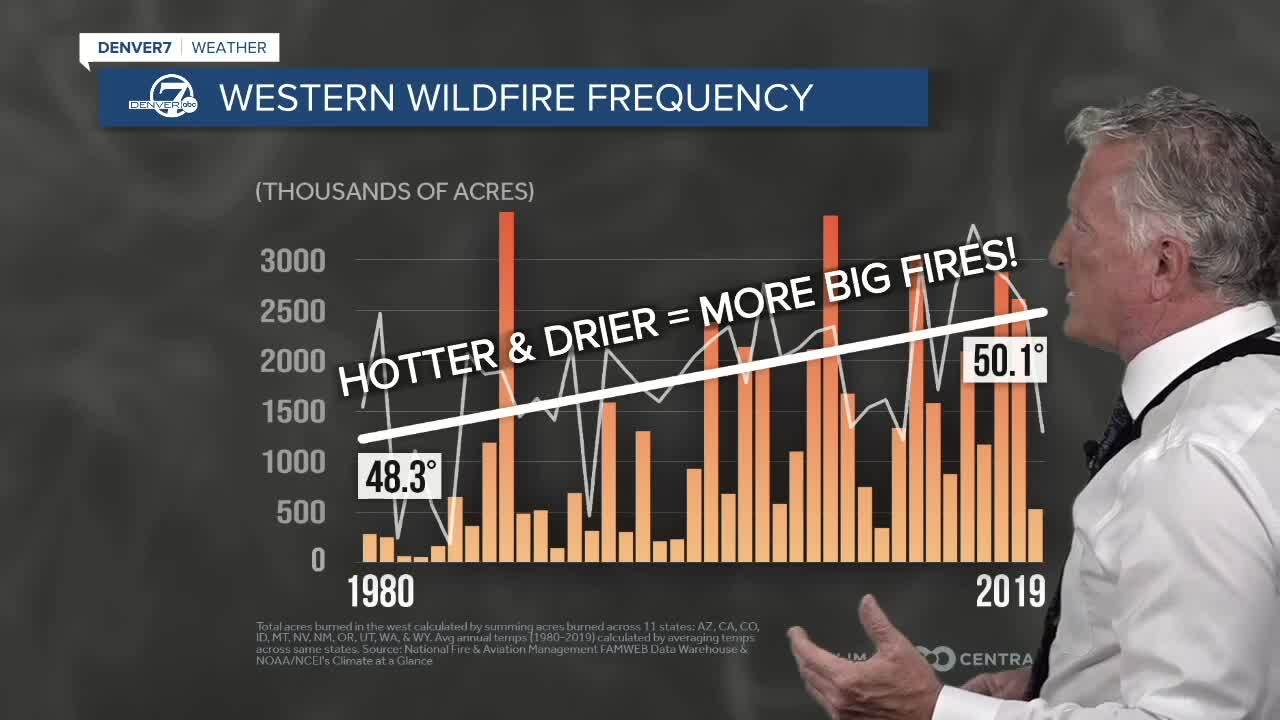DENVER — The western region of the United States is drying out.
Nearly 60 percent of the region is under extreme drought conditions, and one-quarter of the landmass is experiencing exceptional drought conditions, according to July data posted by the U.S. Drought Monitor.

The impact of large-scale drought is massive, from increased wildfire activity to zapping the precious supply of water to the region.
Depleting our reservoirs
Temperatures have been hot across the West, and precipitation has been sparse – and it has really taken a toll on Lake Powell on the Utah-Arizona border.
Looking at images of Glen Canyon Dam from August 2020 to July 2021, one can see Lake Powell has dropped about 30 feet as the massive reservoir has not had much inflow, and the outflow is dropping that water level terribly.

And this is problematic for the whole region. Here’s how it’s described by Western Resource Advocates:
“Lake Powell acts as the primary storage account for water that originates in the Green, Gunnison, San Juan, and Colorado rivers and is eventually released to Lake Mead and the Lower Colorado River Basin states of Arizona, Nevada, and California, and eventually, Mexico. The storage provided in Lake Powell is absolutely critical for the ability of the entire Colorado River Basin system to supply water for upwards of 40 million people in these seven basin states and Mexico.”
Even in a wetter time, Lake Powell (and the entire Colorado River system) are stretched thin because of what’s called a “structural deficit” – when the demand for the reservoir’s water is greater than the supply. Lake Powell feeds Lake Mead, which then supplies water to the Lower Colorado River Basin states of Arizona, Nevada and California, as well as Mexico.
According to watereducation.org, though, those states pull about 1.2 million acre-feet – which equates to more than 391 billion gallons – more than what Lake Powell releases in a typical year.
Long story short: Abnormally high drought conditions across the region only exacerbate the problems in an already-over-allocated water system.
No end in sight: The climate connection
Looking ahead, the extended forecast for the next three months is not encouraging. Warmer than average conditions are forecast all across the West, and drier than average conditions are forecast from the Northern Rockies all the way down through Colorado; all of the wet weather is holding farther to the east.
This is not just weather, there is a climate change connection with what we're seeing.
As the world gets warmer, we do expect to have a continuation of the record-setting wildfires, heat waves, droughts, increased tropical activity – which we’ve already seen so far this summer – and the shrinking Arctic ice, which is in many areas at record low levels.

Global temperatures have been rising over the last 140 years. The world was briefly cooler than average a little bit before World War I. We had that 1930 spike, but then the clear trend, especially in the last 20 to 30 years, is a warming trend. And if you look at the hottest years on record globally, the top 10 hottest years have all been since 2005.

Now, the weather records go back into the 1800s. But by proxy, in other words, looking at ice cores, tree rings, sediments and lake beds, we can actually take this back for centuries to see that the world is seeing an unprecedented warming.
And with that warming, it gets hotter and drier, which equals more big wildfires. There are other aspects that do play into it. Certainly forestry practices that have been misguided over the past century or so. But the fact of the matter is, it's getting hotter, it's getting drier and we're seeing fires at higher levels into the mountains that we would typically experience.
Related | Burn scars: A historic wildfire and a mountain community in healing

The cause is us. It is the increase in carbon dioxide from the burning of fossil fuels. And you can think about each molecule of carbon dioxide like a feather in a down comforter, and that's redirecting or reradiating the heat back down rather than letting it escape into outer space. So it's acting like a blanket, allowing the earth to warm up.

That carbon dioxide remains in the atmosphere for centuries. As a matter of fact, the carbon dioxide from the first Model T automobile is still in the atmosphere, acting like a blanket causing the world to warm.
More coverage | Western U.S. drought



